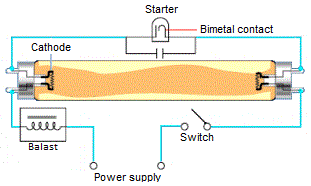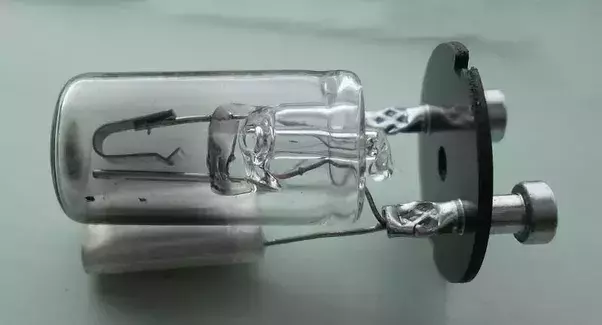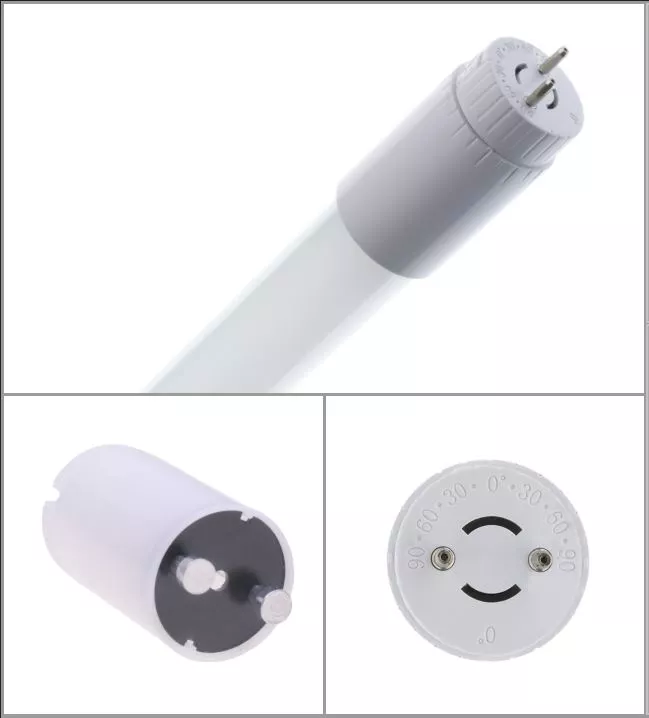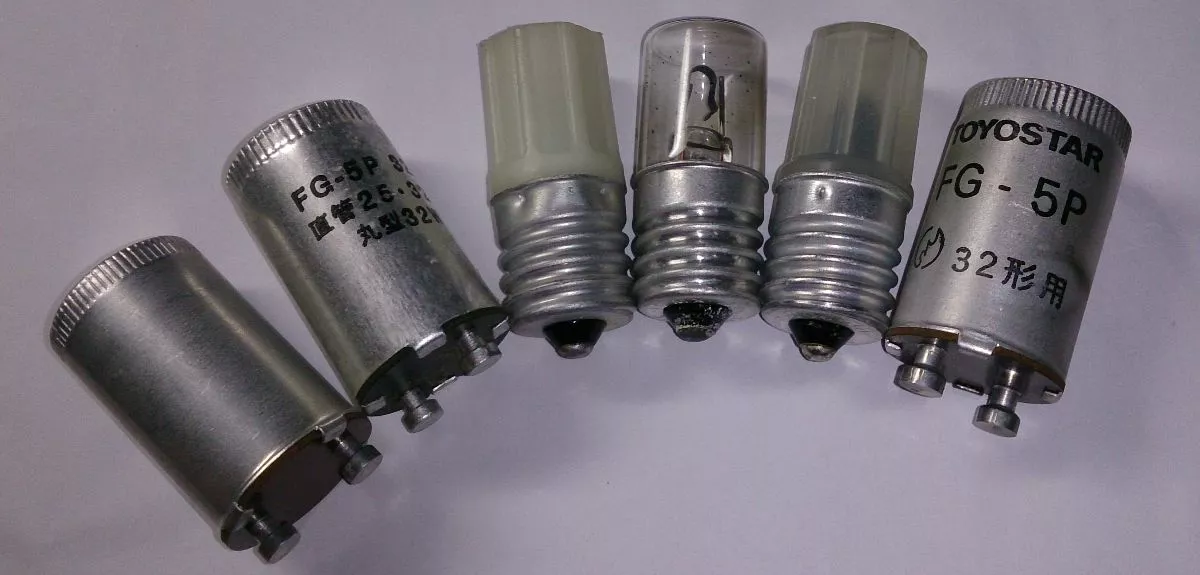A starter is a small device used in certain types of lighting, especially fluorescent tubes. It usually consists of a small glass container with argon gas inside and a bimetallic foil.
Basically, a fluorescent starter generates a sufficient discharge to “activate” the gas inside the lamp so that it lights up. Let’s take a closer look at how this process occurs.
How the starter of a fluorescent tube works
We can say that the starter of a fluorescent tube is simply a thermal switch. When the plug is pressed and the current is allowed to flow, it reaches the tube through the ballast and the starter itself.
Inside the tube the circuit is closed through the filaments. At this time the starter is behaving like an open switch and therefore the current flowing through the circuit is very small.
The voltage causes the temperature inside the starter to rise, which bends the bimetallic contacts (they have different expansion ratios) closing the circuit, raising the current in the tube filaments which, upon reaching the incandescent point, activate the gas that surrounds them.

Then, the temperature of the starter starts to drop, as the gas inside it is no longer ionized, separating the bimetallic foils again. This causes a spike in the voltage high enough to ionize the gas inside the tube.
At this point, the starter remains open and the ballast acts as a current limiter preventing the tube from burning out prematurely.
Elements of a fluorescent starter
It is a very simple electrical device. In fact, in most cases it consists of two components: the gas-filled glass capsule and a capacitor, connected in parallel.
As shown in the image, the glass contains the bimetallic plate that allows the whole system to function and is usually filled with argon or neon gas.

On the other hand, we have the capacitor that works as a radio frequency filter. Its main task is to absorb the electrical interference generated by the discharges on the electrodes to eliminate radio disturbances that could affect other electronic devices. It also reduces the initial voltage peak and spreads it out over time, making the ignition system more reliable and durable.
Types of starters
The type of starter we need will depend on the power of the tube. Although the nomenclature may vary according to the manufacturer, the main types of starters for fluorescent tubes are:
- Starter S2 or FS-22: used in tubes between 4W and 22W.
- Starter S1 or FS-11: for tubes between 4W and 65W.
- Starter S16: in tubes from 70W to 125W.
Fluorescent tubes without a starter
Although they are unknown to many, we can find some more modern tube models that do not need a starter. The most common ones are those that use an electronic ballast.
To ignite the tube in cold condition, a high voltage pulse is needed to vaporize the condensed mercury inside the tube. Electronic ballasts are based on this principle and incorporate, in most cases, a high-frequency transformer and a transistor. Thus, the same device serves as a starter and current limiter.
LED starters: what are they really?
In LED tubes, we can find an element similar in appearance to the starter that is usually called LED starter.
An LED tube with starter can be interesting if we need to make an installation quickly and we do not want to, or cannot, rewire the tube holder and eliminate the ballast. In short, it makes LED tubes compatible with existing installations. Just replace the old tube with the new one and put the new starter in place of the old starter.

However, from Ledkia we always recommend eliminating all unnecessary elements, such as the ballast, since we achieve greater savings. In our LED tubes installation guide you will find step by step how to do it in a simple way.
Now we know that in fluorescent lighting the starter is a key element that is not usually given the importance it deserves. Usually considered a merely auxiliary element, it is essential for the proper functioning and durability of fluorescent tubes.


